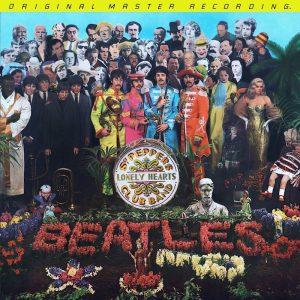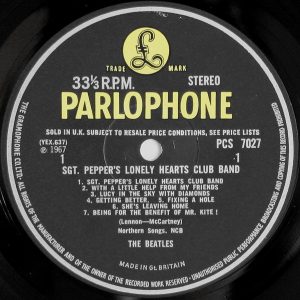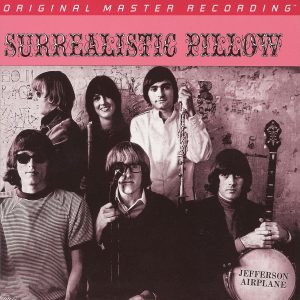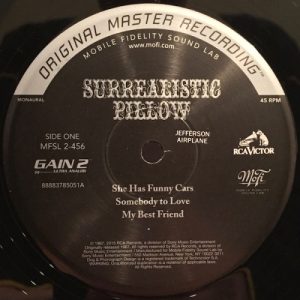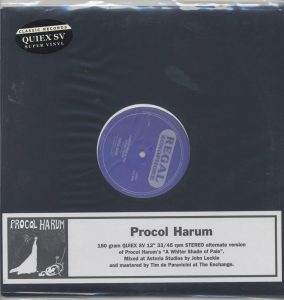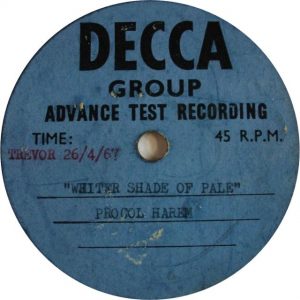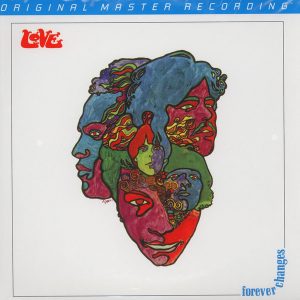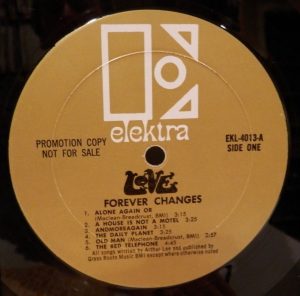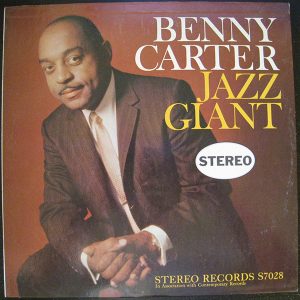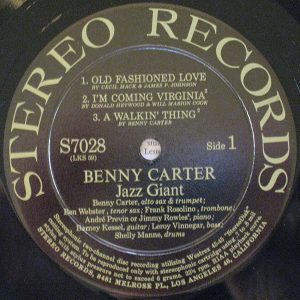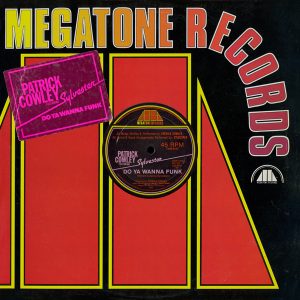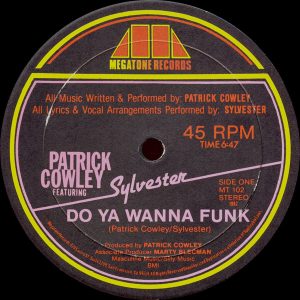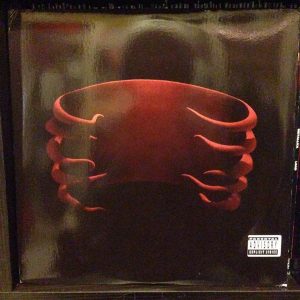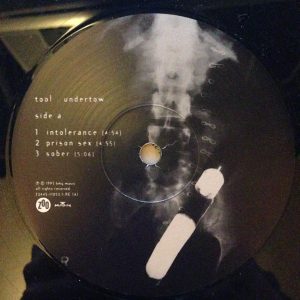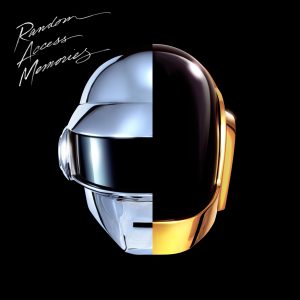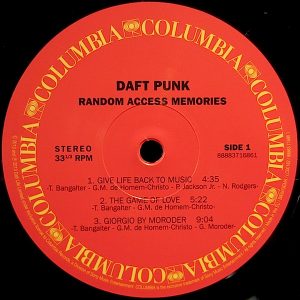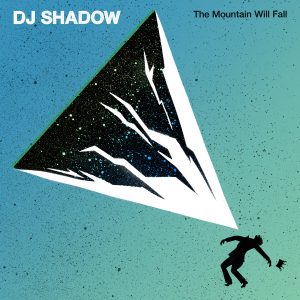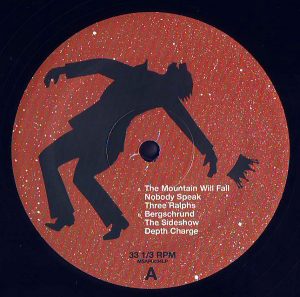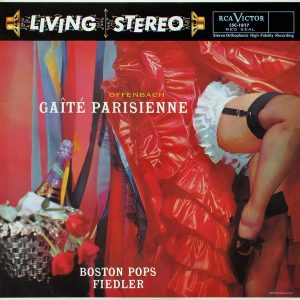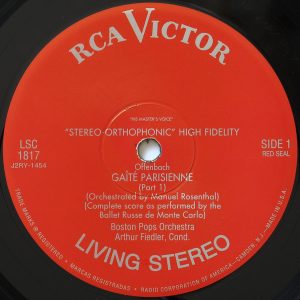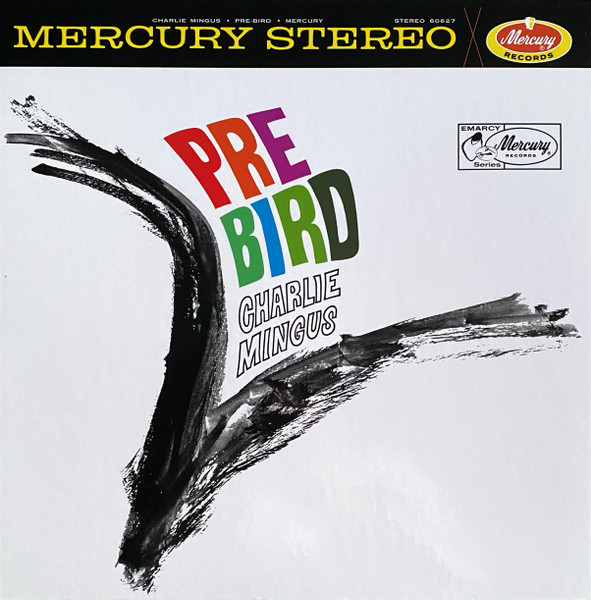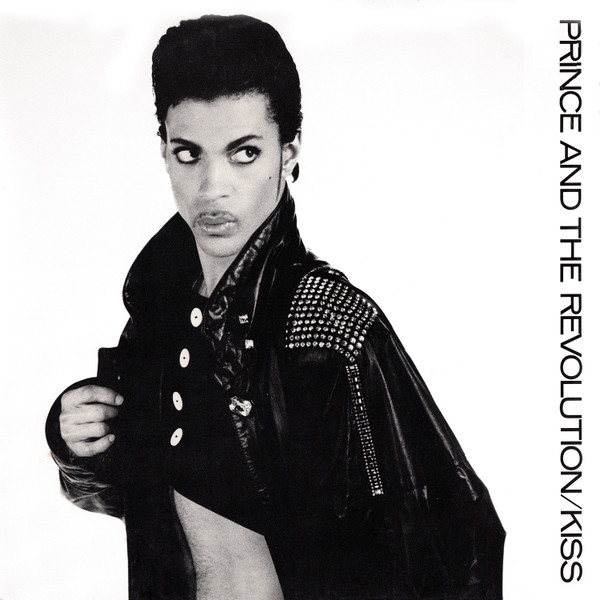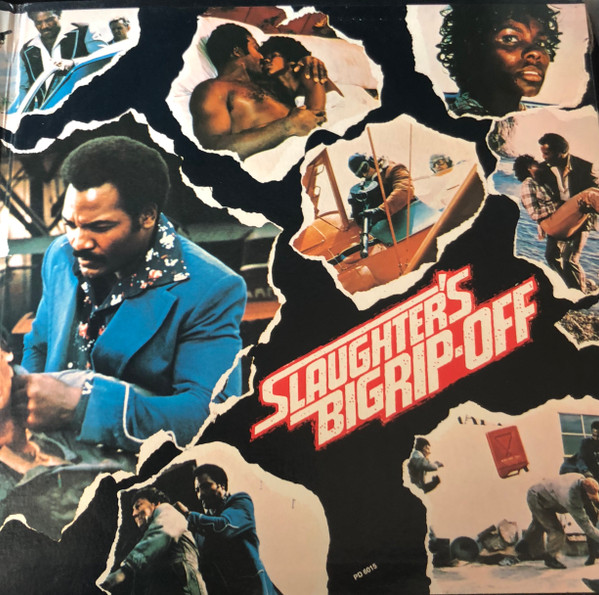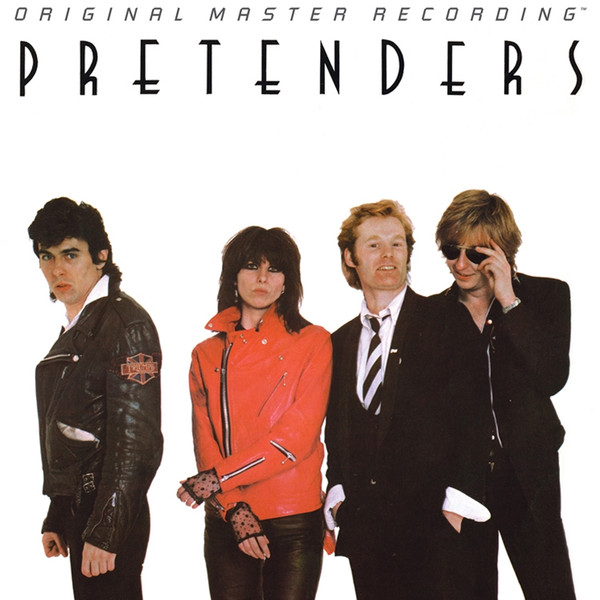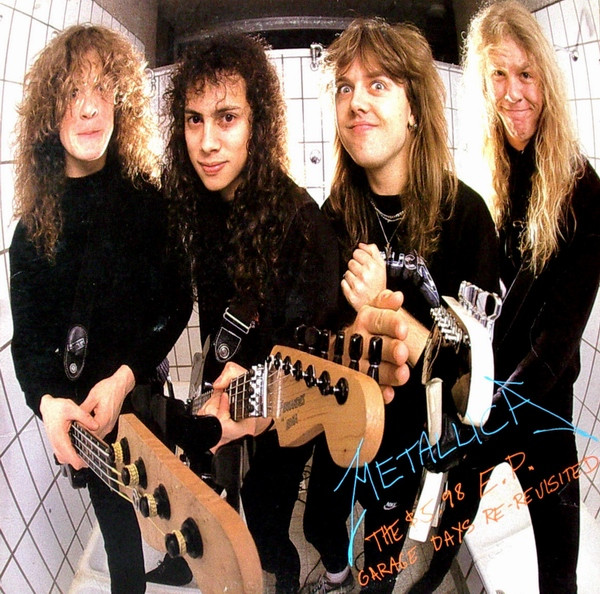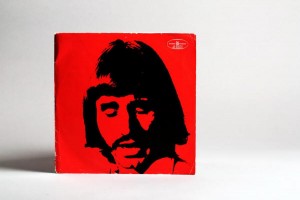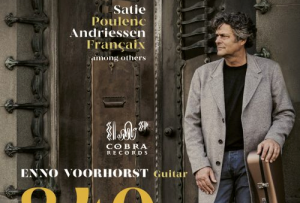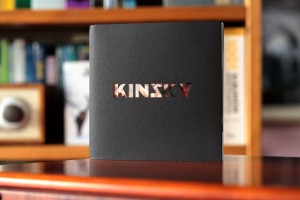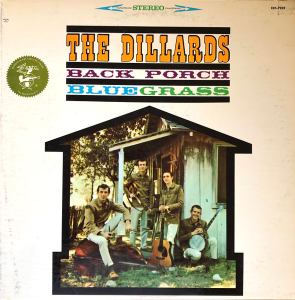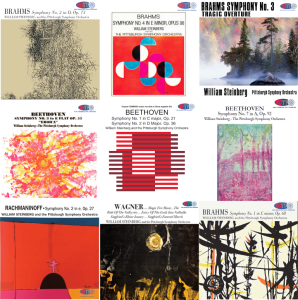This is an ongoing project by Claude Lemaire of Soundevaluations.
"Be sure to wear some flowers in your hair"...
31. The Beatles. Sgt. Pepper's Lonely Hearts Club Band. Parlophone PCS 7027 (1967), MoFi – MFSL 1-100 (JVC) (1983), 33 1/3 rpm). Genre: rock, psychedelic, art rock, baroque pop, raga, avant-garde
It was fifty years ago today, Sgt. Pepper taught the band to play; fast forward five decades into the future, and the Lonely Hearts will probably still sound strong. A half-century has gone by since the masterful milestone album was released in late May/early June 1967, still steadfastly standing the test of time. Never one to rest on its laurels, Liverpool's—or safe to say, the world's—most famous quartet, kept creating and innovating with every album, reaching their pinnacle with 'Pepper', as producer—aka the fifth Beatle—George Martin refers to it in the many documentaries examining that particular period. Widely recognized as one of, if not the most important album in rock history. The latter term taken more in a general sense; in fact, of all the pre- and post- 'Pepper' albums, most of the songs do not adhere to the narrower definition of rhythm and blues-based, guitar-driven rock. Mixing elements of pop, psychedelia, baroque, circus, raga rock, music hall, and culminating with avant-garde; it's certainly the most musically diverse and ambitious work of the Fab Four, inspired more from European and Indian influences than African-American roots, and a far cry from their early Cavern and Merseybeat days. It included many studio advances such as inter-song crossfades, flanging, pitch shifting, and automatic double tracking. Geoff Emerick engineered the whole recording starting in late November 1966 up until April 1967 by bouncing tracks between two Studer J37 four-track recorders–a 'creative way' to compensate for the typical studio gear limitations of the day before the advent of true eight or higher multi-track machines–with impressive results, but some sound quality penalties nevertheless inherent in the procedure. I was lucky to find a reasonably affordable original stereo UK YEX 637-1 pressing in NM (-) condition. The sound is mostly well balanced, sporting splendid vocal presence, and a slight hint of broad midrange forwardness that helps create the illusion of inviting the Fab Four into your home. Transparent on top with just a hint of lacking bass heft in the bottom. The soundstage is well exploited in both depth, and L-R spread to convey the psychedelic mood, more so than the mono mix in my opinion–those favoring the latter, argue the team spent three weeks on it versus around three days on the stereo mix. My mint MoFi copy was the version sold separately, remastered and cut by Jack Hunt–who also did the ultra-expensive 1984 Nimbus "Supercut series"–and as such should not be confused with the version featured in the MFSL Beatles Box done by Stan Ricker–which it seems contains a 5dB boost around 10kHz on every LP within the boxset. Due to many contradictory information online, it is not clear if the UHQR version from 1982 [MFQR 1-100]–also by Ricker–suffers the same fate or is a different EQ/master/cut completely, with some audiophiles praising it while others less so; not owning a copy myself, I will not speculate further on its sound. Now back to this 1983 Hunt-cut MoFi: although there is a bit of grain in some instances with a small veil in the top reducing transparency, the general tonal balance is fine with a bit more bass weight, and a slight reduction in soundstage dimensions than the original Parlophone. From a musical standpoint, there was never any doubt about its inclusion, but the sonics are also good enough to enter this List; just do not expect it to be in the same league as current MoFi double 45's. Not surprising given the differences in speed format, and the level of refinement in remastering gear or that you get with a trio such as Krieg Wunderlich, Shawn R. Britton, and Rob LoVerde working hand in hand. I did not buy one of the relatively recent reissues–the stereo LP, cut from newly EQed, 24bit/44kHz digital files nor the later mono LP, cut from analog tapes, and both remastered at Abbey Road–after being disappointed with three mono titles I thought could be good alternatives for UK originals...turns out they were not!
32. Jefferson Airplane, Surrealistic Pillow. RCA Victor LSP-3766 (stereo) or LPM-3766 (1967), MoFi MFSL 2-456 (2015), (2x45 rpm) mono. Genre: psychedelic, folk rock
If there is one album that is most associated with the psychedelic era, the San Francisco Sound, and the Summer of Love it is surely Surrealistic Pillow. Recorded during the autumn of 1966 and released in February of the following year, the Bay Area-based band's second LP introduced us to the first great female rock lead singer, Grace Slick—Tina Turner did precede her by a few years fronting Ike but bended more towards a rhythm and blues-soul style. They were of course in very good company: within that same tumultuous time period; Cream; The Doors; the Grateful Dead; The Jimi Hendrix Experience; and Pink Floyd would each release their debut albums; while The Beatles spiced things up with some Pepper into the mix; all the above marking their 50th anniversary this year. Their third LP, After Bathing at Baxter's, veered more experimental and is still worth exploring, but if you are limiting to fly only one Airplane, this is the one. Mixing psychedelia with folk rock had already been accomplished by The Byrds the year before with their pioneering composition "Eight Miles High", and subsequent LP Fifth Dimension in July. Here the folkish strings and harmonies borrowing from The Mamas & the Papas, spun two historical hit singles, both originally done by Slick while with her former band, The Great Society: "Somebody to Love" and "White Rabbit". The latter, a two and a half minute masterpiece inspired by Davis and Evans' Sketches of Spain, and structured along the lines of Ravel's "Bolero", as a snare-driven, crescendo rhythmic loop, underpins the phrygian modes by the guitar and vocals. Produced by Rick Jarrard and engineered by David Hassinger at RCA Victor's Music Center of the World in Hollywood, CA. I did not have a US original to compare with but I do have a 1st press stereo Canadian 'deep-groove' black label-white dog, and like many RCA's of that period, it never impressed, sounding tinny and compressed. The 1997 DCC stereo reissue [LPZ-2033] remastered and cut by Hoffman and Gray improved somewhat over the latter in lessening a bit the compression, and elevating the bass but never to the point of inclusion in this List. Enter the MoFi, remastered and cut in mono on double-45 rpm by Krieg Wunderlich and Rob LoVerde. Big, fat mono presentation with stupendous solidity and musical force. Grace Slick's vocals are clear and dryer, ridding the excess of reverb present probably only on the stereo master tape—a common studio or mastering practice for that period, harking back to the late 1950s to add 'fake stereo or depth effect' in order to better differentiate with the dryer mono version. Stunning dynamic contrasts; superb and surprising bass content for the times—not what you would expect from RCA nor typical rock sound pre-1969—frank electric guitar/amp sound; impressively transparent, delicate acoustic strings on some songs. If all mono reissues would attain this level of refinement, stereo would have had a harder time winning its case. Another stunner from the folks at MoFi!
33. Procol Harum. "A Whiter Shade of Pale" (Alternate Version). Regal Zonophone, Classic Records (2003), 12", 33 1/3 rpm (A) / 45 rpm (B). Genre: baroque pop, blue-eyed soul, blues, psychedelic, art prog pop
Based on an adaptation of Bach's orchestral suite No.3 in D major aka "Air on the G string" by most, soulful vocals, and 'church-esque' organ—both evoking the spirit of Percy Sledge's "When a Man Loves a Woman"—"A Whiter Shade of Pale" remains Procol Harum's biggest hit, and another anthem of the Summer of Love. By now you are probably wondering why I included this record in the List, based on the memory of the version we all grew up with, which always sounded compressed, veiled, murky, and distant. Nothing could be further than the truth on this newer version mixed by John Leckie at Astoria, and mastered by Tim de Paravicini at The Exchange in London. The original mono mix, May 1967 single [Deram DM 126], was made with session drummer Bill Eyden; whereas this alternate version was done only a few days afterwards with their newly hired drummer Bobby Harrison in real stereo—and not the fake "Electronically Re-Processed" kind that was on the 'stereo' U.S. and Canadian pressings. Both sessions were produced by Denny Cordell, and recorded by Keith Grant at Olympic Studios, London, UK. The latter along with Leckie did an amazing job mixing the quintet's instruments and vocals while Paravicini—best-known for his highly regarded custom 'mod' recording gear—demonstrates his good taste with spot-on tonal balance, solid weighty bottom end lows, creamy, warm sound, and appropriate soundstage image placement—vocals, guitar, and drum in the center, bass center left, organ center right; i.e. not hard-panned. You can for the first time follow the bass in the mix, while the kick, snare and tom rolls are crisply defined with the ride cymbal more subdued yet precise instead of awash in dirt; and yes there is a delicate guitar mixing with the Hammond organ that seems totally obscure in the original single. Both sides are identical, with the 45 rpm naturally coming on top slightly in airiness, and articulation, but it is close. Sadly it is not much longer than the version we all know, ending also with a fade-out.
34. Love, Forever Changes. Elektra EKS 74013 (1967), MoFi MFSL 2-402 (2016), (2x45 rpm). Genre: psychedelic, folk rock, baroque pop, progressive, art rock
Completing our '67 trip down memory lane, comes Los Angeles-based band Love. I already owned their self-titled debut, discovered in a second-hand shop a while back—stored in my collection right in front of another better known L.A. group—but it took MoFi to reissue their third release, Forever Changes, for me to rediscover, and fully appreciate them to the fullest. Not to diminish the Doors relevance, but this Love LP—which unfortunately failed commercially—is immensely rich on musical grounds alone, and incredibly great sounding to match. Like 'Pepper', it covers multiple musical directions popular for the period. Though on one hand it stays closer to folk, rock, and psychedelia, at the same time it provides a 'preview' of the proto-progressive pop that predated the full-fledged prog of the following decade. Quicksilver Messenger Service's first two albums from 1968 and 1969; Genesis' 1969 debut From Genesis to Revelation; as well as The Moody Blues' A Question of Balance and Every Good Boy Deserves Favour from 1970 and 1971 respectively; came to mind upon first absorbing the album's ambiance. Additional musicians featuring diverse strings and horns, join the core quintet. Bruce Botnick—better known for his work with the Doors—co-produced with lead singer Arthur Lee, and engineered the recording during the Summer of Love, while the LP came out only in November. Contrary to the Jefferson Airplane above, this is a stereo release, and it is quite hard-panned, such as the entire drum set completely confined to the left channel. Of course the latter effect is not realistic but makes a very solid clean image and tone, having no phase distortions to deal with as is often the case with 'stereo-spread' drums. All the other instruments share this same close-mic, direct dry sound, akin to great headphone precision. Engineers Krieg Wunderlich and Rob LoVerde did a fantastic, consistent, remastering/cutting job on this double 45 rpm.
35. Benny Carter, Jazz Giant. Stereo Records Contemporary S7028 (1958), Analogue Productions AJAZ 7555 (2005) (2x45 rpm). Genre: jazz, small combo swing, bop, jump blues
Recorded between June 1957 and April 1958, this was the first of only two albums that Benny Carter released for Contemporary—the jazz giant changed record labels many times throughout his roughly 50-year career. Here he is joined by a who's who of West Coast musicians: Shelly Manne; Leroy Vinnegar; Barney Kessel; André Previn; Ben Webster; Frank Rosolino; and Jimmy Rowles. Like Way Out West (selection #5), Jazz Giant was part of the earliest jazz vinyl reissue batch by Acoustic Sounds' then nascent label, Analogue Productions. Being another Roy DuNann engineering success–as everything the man touches seems to turn into sonic gold—we are rewarded with the typical triptych of warmth, precision, and proximity. The opening riff on track one—"Old Fashioned Love"—sets the stage with very intimate saxes breathing on your 'left shoulder' with a realism to die for. The alto sax soon leads the way, exchanging playfully with Webster's warm rich tenor, answering Carter's every call. Kessel's guitar and amp follows on the right speaker, and is probably the most realistic 'guit. tone' I ever heard on record; every note and pick-up resonance pairing perfectly with Vinnegar's articulate signature walking bass. Previn's piano displays excellent presence and range—way above average for the period—Rosolino's trombone has the requisite blat, and Manne's drums and cymbals, swing with swagger all the way. "I'm Coming Virginia" showcases Benny's bluesy side in a slow New Orleans style which highlights his elegant phrasing on the trumpet with superb timbre and clarity. Finally, his own composition "A Walkin' Thing" closes the first LP with a smooth 'spy-style' feel, featuring incredible sound. The album is universally excellent with only tracks 5 and 7 a notch under. First remastered by Doug Sax with tube electronics on a single 33 1/3 rpm around 1993 [APJ-013], it sounded quite good back then, but this double 45 rpm remastered and cut by Hoffman and Gray is a bit dryer, airier on top, and more intimate; and elevates it to another level altogether; confirming once more that the duo were at the top of their game back then. Very close to perfection if it were not for a minute lack of weight in the double-bass on a few tracks when compared to the typical DuNann Contemporary bass sound, but that's being extra-picky.
36. Sylvester, "Do you Wanna Funk". Megatone Records MT 102 (1982), 12", 45 rpm. Genre: Hi-NRG
One of the interesting musical movements emerging in the early 1980s post disco period was the high pace style known as Hi-NRG; serving as a sort of ancestor to the 1990s techno and Eurodance scenes. A key player of this uptempo—130 to 140 BPM—synth-driven, disco derivative form was San Francisco-based singer Sylvester, who had three major club and chart hits: starting in August 1978 with the energetic 12-inch single "Dance (Disco Heat)" with "You Make Me Feel (Mighty Real)" [Fantasy D-102] cut on its flip side, and terminating exactly four years later in 1982 with "Do you Wanna Funk", produced by electronic maven Patrick Cowley–who would pass away just a few months later, being one of the early victims of the nascent AIDS epidemic; a prelude to the singer's own death in 1988 at age 41. Though that first hit single is musically worth having, its sound is merely good but far from outstanding; whereas this latter hit is truly excellent and way above the norm for that time period, which unfortunately was paving the way for higher and harder compression levels. By contrast, on this 12-inch release, the mix and tonal balance combined with Sterling's mastering are perfect; the mid and upper-bass (50 to 80Hz) region provides plenty of dynamic modulation while a mild upper-mid shelving, permits ample headroom for high SPLs either in club or home settings, free of any listener fatigue. Electro-percussive intro and middle break add spice to the mix. The B-side's instrumental version enables us to better appreciate the various synth melodies and polyphonic harmonies behind the main vocals. I often play this track to test systems for the elusive 'fun factor', and believe me most of these expensive 'audiophile' kits fail the test. Thus it should not surprise us as to why you rarely hear certain types of music at hifi shows, many preferring to stick with traditional jazz trios. Although there are more challenging recordings in other genres that display a system's dynamics or low end extension better, this kind of dance record can inform you on other 'non-audiophile' aspects, bringing you back to the core reasons that got you hooked to hifi in the first place.
37. Tool, Undertow. Zoo Entertainment, BMG MUSIC 72445-11052-1-RE (1993) (1997), (2x33 1/3 rpm). Genre: alternative progressive metal
Many rock metal bands of the 1990s—musically interesting or exciting as they might be–sadly suffered from the highly infectious 'loudness war' syndrome. Fortunately some escaped this horrific pandemic; such is the case with L.A.-based Tool. Originally released as a single LP in 1993 before being reissued on a double LP first in 1996 with printed inner sleeves, and repressed the following year without; the band's debut bore a breath of fresh air in what seemed a stale state at the time in the metal and grunge scene. In effect, as both subgenres passed their creative peaks and popularity, alternative-tinged bands like Rage Against the Machine, Shellac, Tool, and Korn, each brought forth their own take on diversifying the future of rock. What strikes the latter two is the 'drop D tuning' of their guitars, generating a deep full heavy sound in texture—while in the case of Korn, they even got guitar giants Ibanez to manufacture special 7-string versions designed by and for them. Back to Tool: co-producer and engineers Sylvia Massy along with Ron St. Germain did a fantastic job recording at Sound City Studios in Los Angeles and Grandmaster Recorders in Hollywood, and mixing the album at Ameraycan Studios with very low compression—and I suspect even a bit of dynamic expansion on some key drum sounds—creating cohesive top to bottom warm tonal balance, and fatigue-free sound from start to finish; an all-too-rare result especially for this musical subgenre and time period. Massy is one of the rare 'famous' female recording engineers in rock or metal, best known for mixing in analog on her vintage Neve 8038 with 'flying faders'. Judging by this LP's sound at least, perhaps we would have been better served with more women working the knobs. Of course all the above would be meaningless if the music was not au rendez-vous, which it is in spades. I have not heard their following albums but Undertow must not be underestimated.
38. Daft Punk, Random Access Memories. Columbia Sony Music 88883716861 (EU) (2013) (2x33 1/3 rpm). Genre: disco, funk, electro-disco, progressive, synth pop, west coast soft rock, experimental
When the French robot duo released this double-LP back in 2013, it stunned many in the music, studio, and audiophile world—myself included, giving it a rave review at the time. Revisiting it for this List has not diminish my initial enthusiasm one bit, still ranking it in the upper echelons of outstanding, artful-pop achievements of all time. Spread over four years, five studios, and costing over a million dollars, it was a very ambitious and successful album in terms of musical composition, arrangements, technical production, and final mastering; resulting in a wide-frequency range, 'late 1970s mildly compressed style' sound aesthetic—not discounting a rare mixture of genres including disco, funk, electro-disco, synth pop, progressive, west coast soft rock, experimental, and groovy hits to boot. Their sound production inspirations were the 'classic pillars' of the 1970s: Pink Floyd's The Dark Side of the Moon, Fleetwood Mac's Rumours, Steely Dan's Aja, and Michael Jackson's Off the Wall–without a doubt, all great choices. Five different engineers contributed to the combined analog and digital recordings in the States before Antoine Chabert at Translab in Paris, handled the lacquer mastering+cutting. With the exception of the LP's penultimate track, there is no 'second-class' material; all are musically rewarding. The apex for me (and many I suspect) being the third track "Giorgio by Moroder"—the maestro himself, whom I had the pleasure of meeting backstage at the end of a 'deejay-type' church concert he gave in Montreal in fall 2015. In addition, an impressive roster of 'big ticket' names and musicians contributed to the project including Nile Rodgers, and Pharrell Williams just to name a few. Sadly my wish that this musical monument might somehow spearhead a movement, reversing the pop industry's trend of trashing out loud compressed junk has not materialized, but one must never lose hope. For a more in-depth evaluation, you can go HERE.
39. DJ Shadow, The Mountain Will Fall. Mass Appeal, Liquid Amber MSAP0034LP (2016) (2x33 1/3 rpm). Genre: bass music, breaks, samples, instrumental hip hop
Beginning in the late 1980s experimenting on four-track recorders, and progressing as a deejay, Josh Davis aka Shadow honed his technical skills leading up to his 1996 debut album—Entroducing... [Mo Wax FFRR 697 124 123-1]—densely created from vinyl samples from his collection using the famous Akai MPC60 sampler/sequencer. His fifth studio album—The Mountain Will Fall—still uses samples but to a lesser degree; concentrating more on building ambiences with great—gritty at times—texture. Depending on track, he may alter directions going from hip hop—some minor vocal rapping, but mostly instrumental beats—to breaks, to James Brown-styled funk to bass music; which in the latter is self-explanatory; i.e. music that explores the nether regions. So if you truly want to appreciate the incredible 'bottom reach' richness of this double-LP, you might wish for speakers a bit bigger than ProAc Tablettes; conversely, a typical separate subwoofer may not be the best solution neither; simply 'slowing' things down. Of course when the production digs this deep, it is as important to reach quite high in the other direction in order to maintain tonal equilibrium, and articulation, which it does in spades. Shadow arranged, produced and programmed the beats, scratches, and drums on the album; while Frank Tabino, and Bob Macc did a fantastic job, mastering the album with moderately appropriate compression so as to insure sharp attacks, and long sustains in the 'FFRR' sound envelope. Recordings were divided between three studios: Thrum in London; Circuit in San Francisco; and 80 Hertz in Manchester, while Rainbow in California handled the pressings. Not only is the sound solid, powerful, and immense; it is as impressive musically. Highly recommended to test system performance, and its limits.
40. Offenbach, Boston Pops, Arthur Fiedler, Gaîté Parisienne. RCA Victor Red Seal LSC-1817 (1958), Classic Records LSC-1817, Living Stereo series, QUIEX SV-P 45 (2002?), (4 single-sided x 45 rpm). Genre: classical, orchestral.
Similar to Mussorgsky's Tableaux d'une Exposition wherein the version most often heard is in fact Maurice Ravel's magnificent orchestral arrangement; Offenbach's original ballet score is best known for French conductor and composer Manuel Rosenthal's orchestration. Recorded June 1954 in Boston Symphony Hall by engineers Leslie Chase and John Crawford, and produced by John Pfeiffer, this was Arthur Fiedler's first stereo session—he had led the Pops in a previous RCA recording of the work back in 1947. It is also noteworthy, one of the earliest stereo magnetic recordings per say, the first occurring just prior in February—an incredible feat considering the RCA team treated these as experimental, not knowing if they would ever be heard by the public, whereas a second team led by Layton and Mohr were in charge of the standard mono LPs. These 'experimental' sessions were first released around 1956 on—expensive for the time—2-track 1/4-inch tape reels to advanced audiophiles (a situation not unlike today's market ironically), and later pressed onto vinyl, when stereo discs first appeared in 1958. Classic Records first reissued this golden age gem on a single 180g LP at 33 1/3 rpm in 1994 which immediately impressed me, and a few years later on 4 single-sided 45 rpm 200g slabs, that I treasure even more so. Not surprisingly the latter format surpassed the former edition, especially in explosive dynamics, blazing brass, fiery percussion, and perfect tonal balance. I do not have an original Living Stereo pressing to compare with, but I would be astonished that it could compete on the same level playing field, given the outstanding sonics of this Bernie Grundman cut—one of his top remastering jobs, on par with the Witches' Brew [LSC-2225] covered in selection #10. Nor do I have the Analogue Productions [AAPC 1817] 2014 reissue done by Ryan Smith at Sterling Sound, and pressed at QRP on a single 33 1/3 rpm. Here again, it is difficult to imagine in what manner the 'BG 45 cut' could be beaten.
Now don't go 'bonkers' if you have not found your favorite recording included in this List, just remember: we are only at the beginning of a long long journey... into sound.
For more from Claude Lemaire go to his blog...
http://soundevaluations.blogspot.ca/




